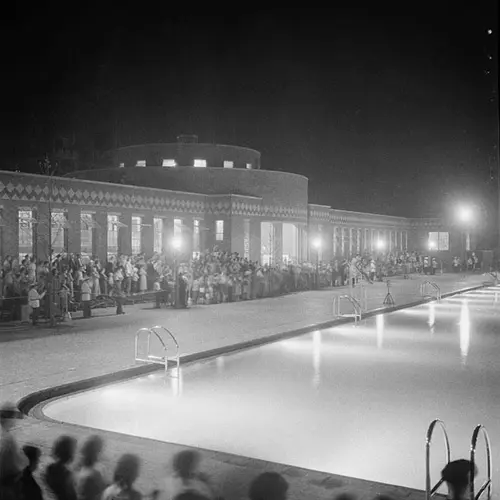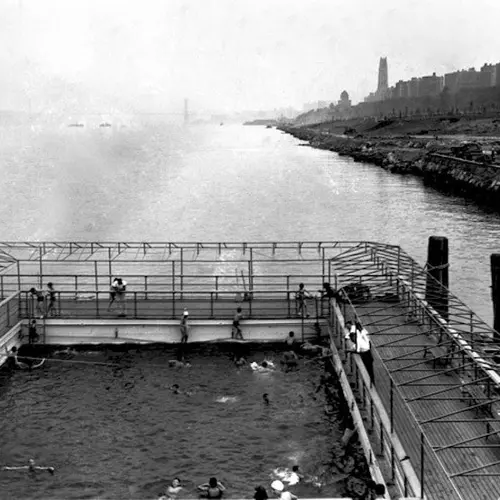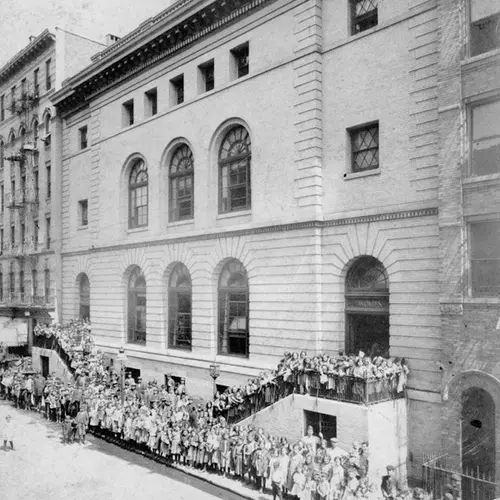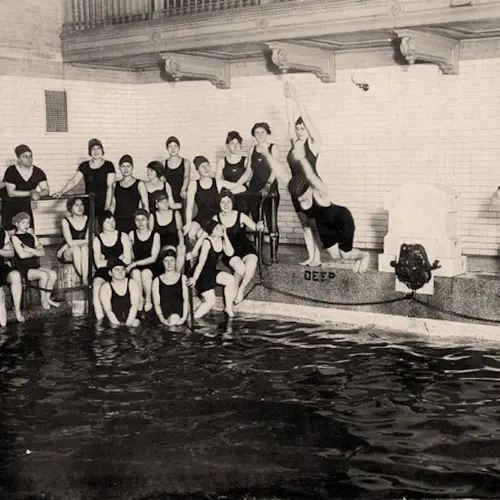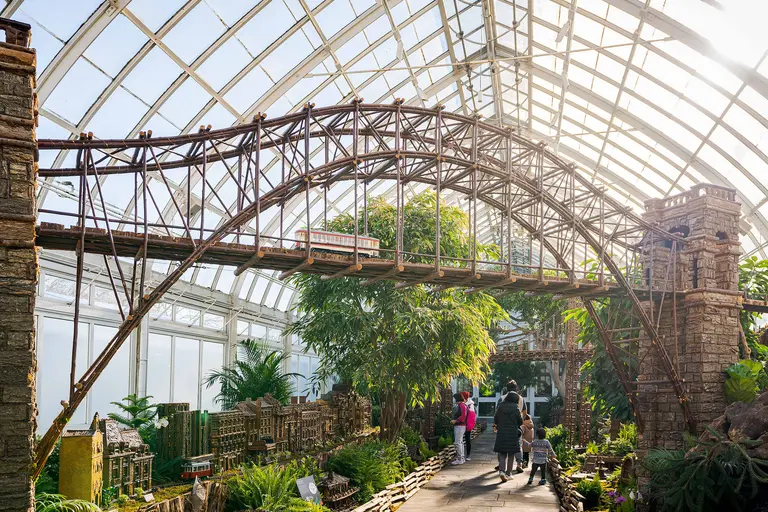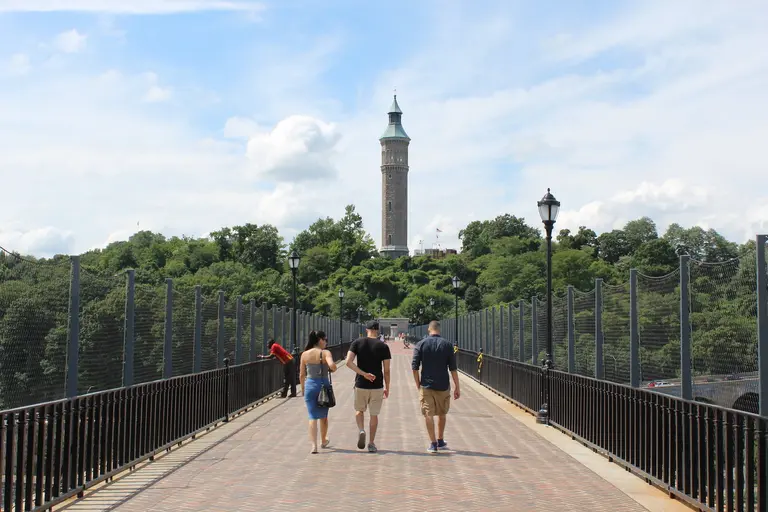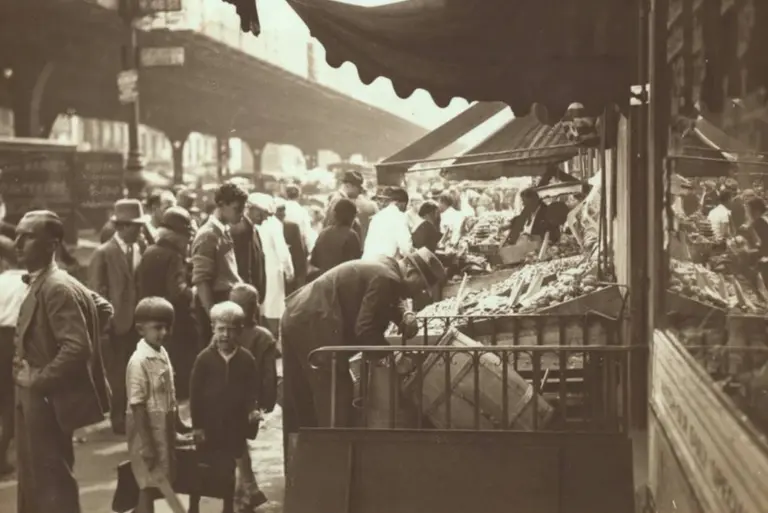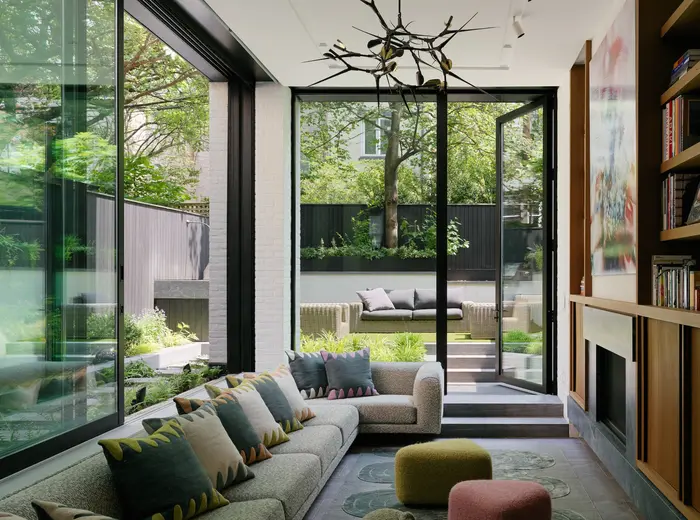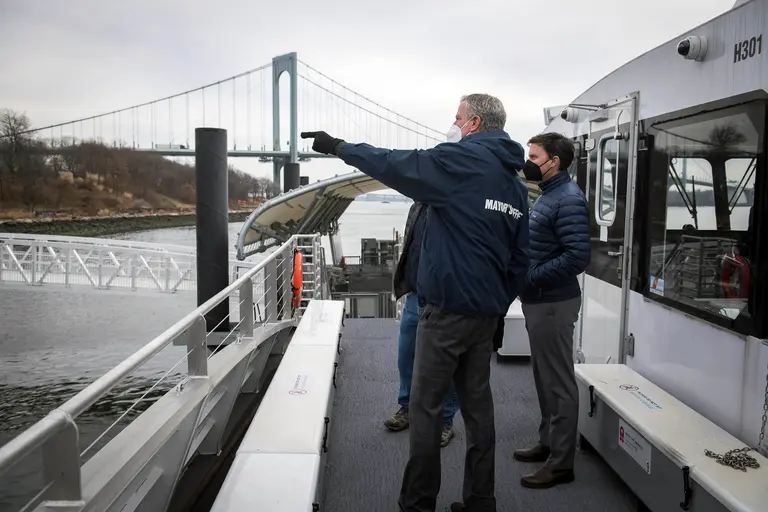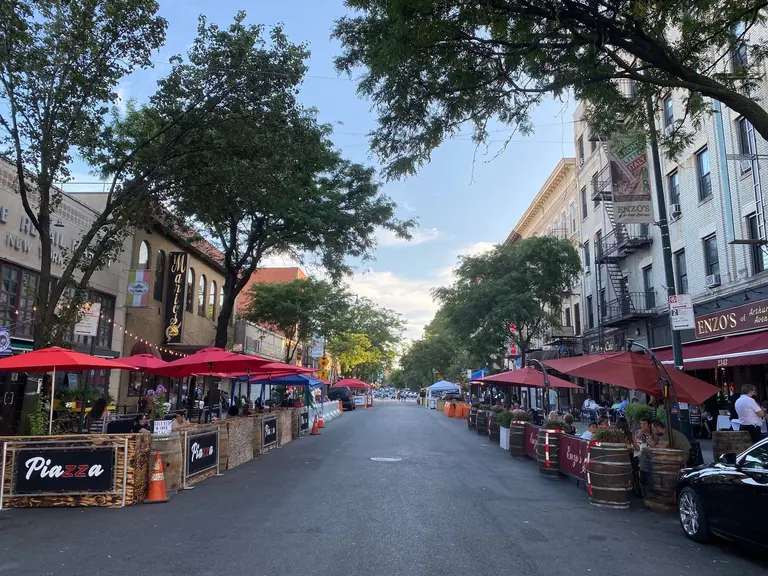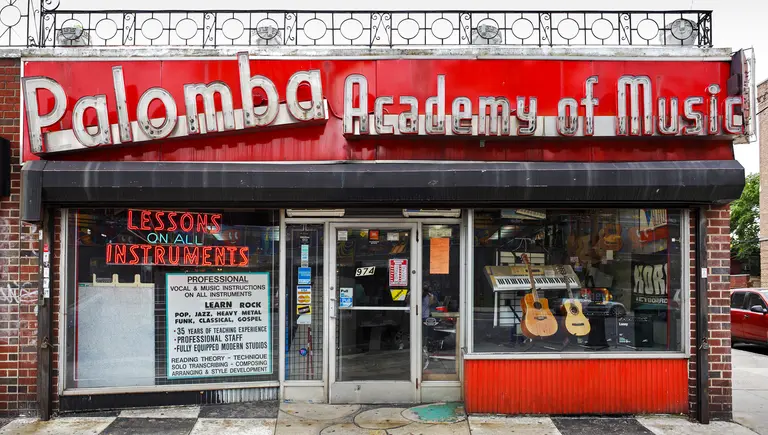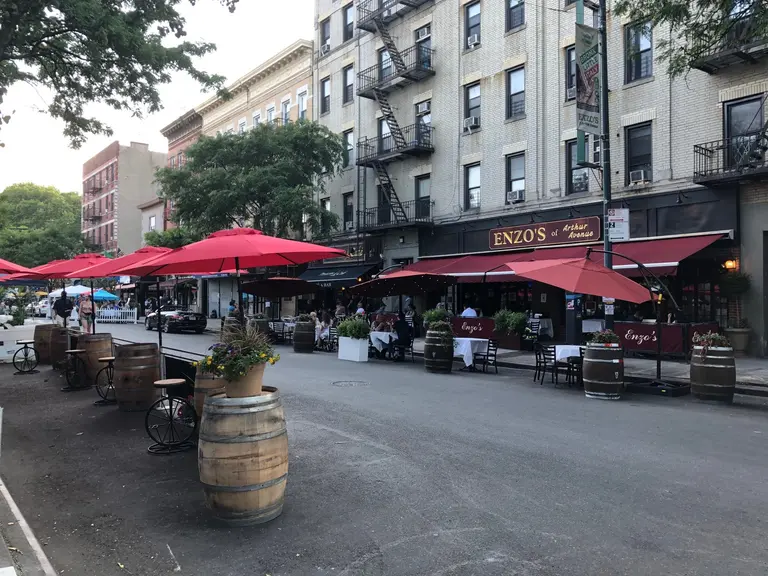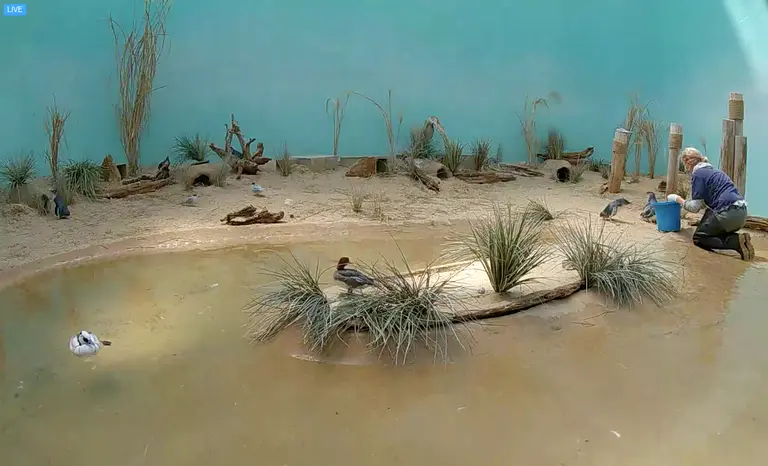Floating pools on the Hudson and East Rivers kept New Yorkers cool as early as 1870
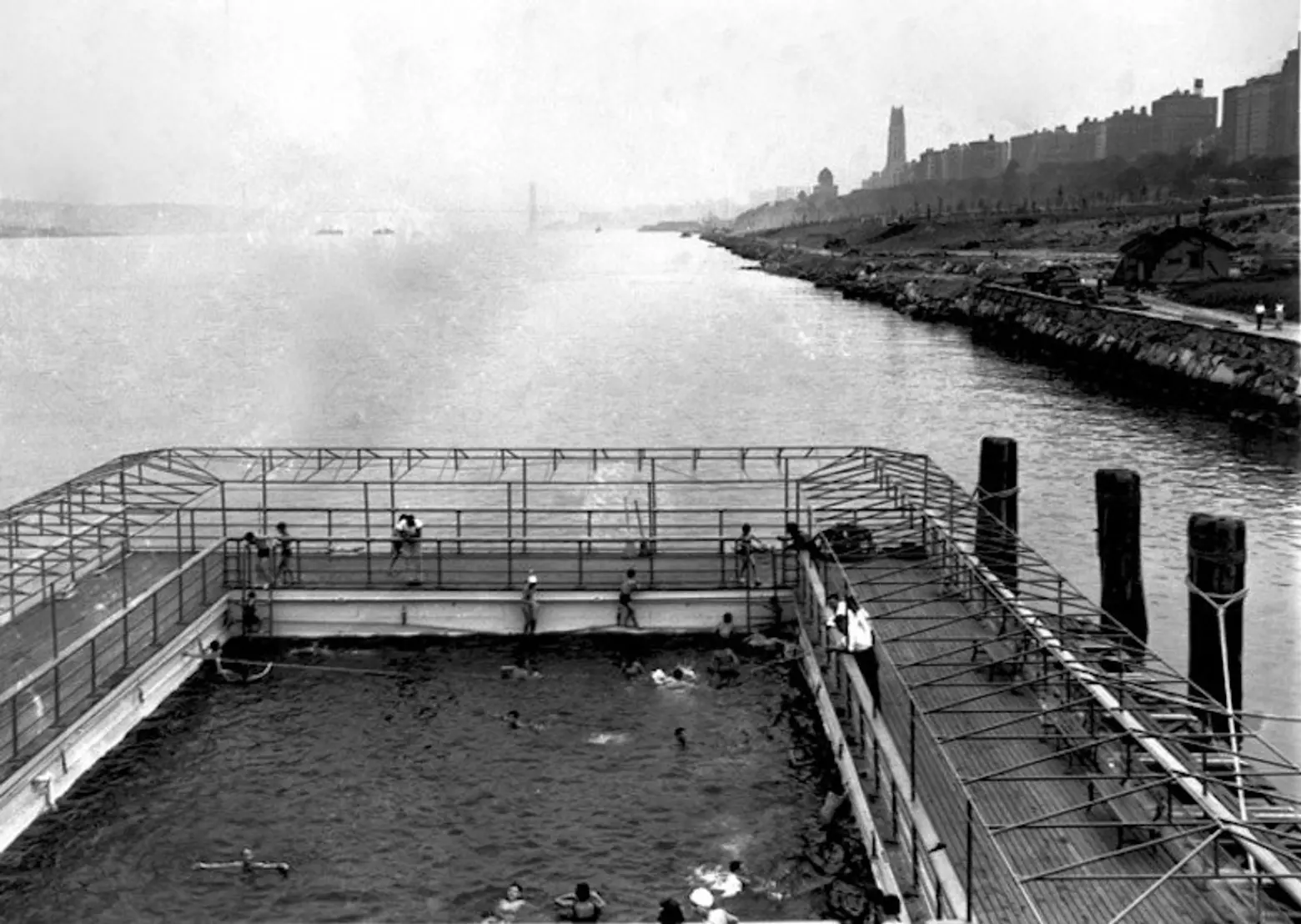
Early public floating bath. Image: New York City Department of Parks and Recreation.
With summer winding down, New Yorkers are treading water til fall arrives–with late-season heat and kids that still need to be kept busy, back-to-school or not. The good news: Most city pools are open until September 10. This form of easily-accessible fun has been keeping NYC cool since the early days of the 20th century. The New York Times tells of the first city pools and their origins as public baths as early as 1901–and the even older pontoon-pools that floated in the Hudson and East Rivers.
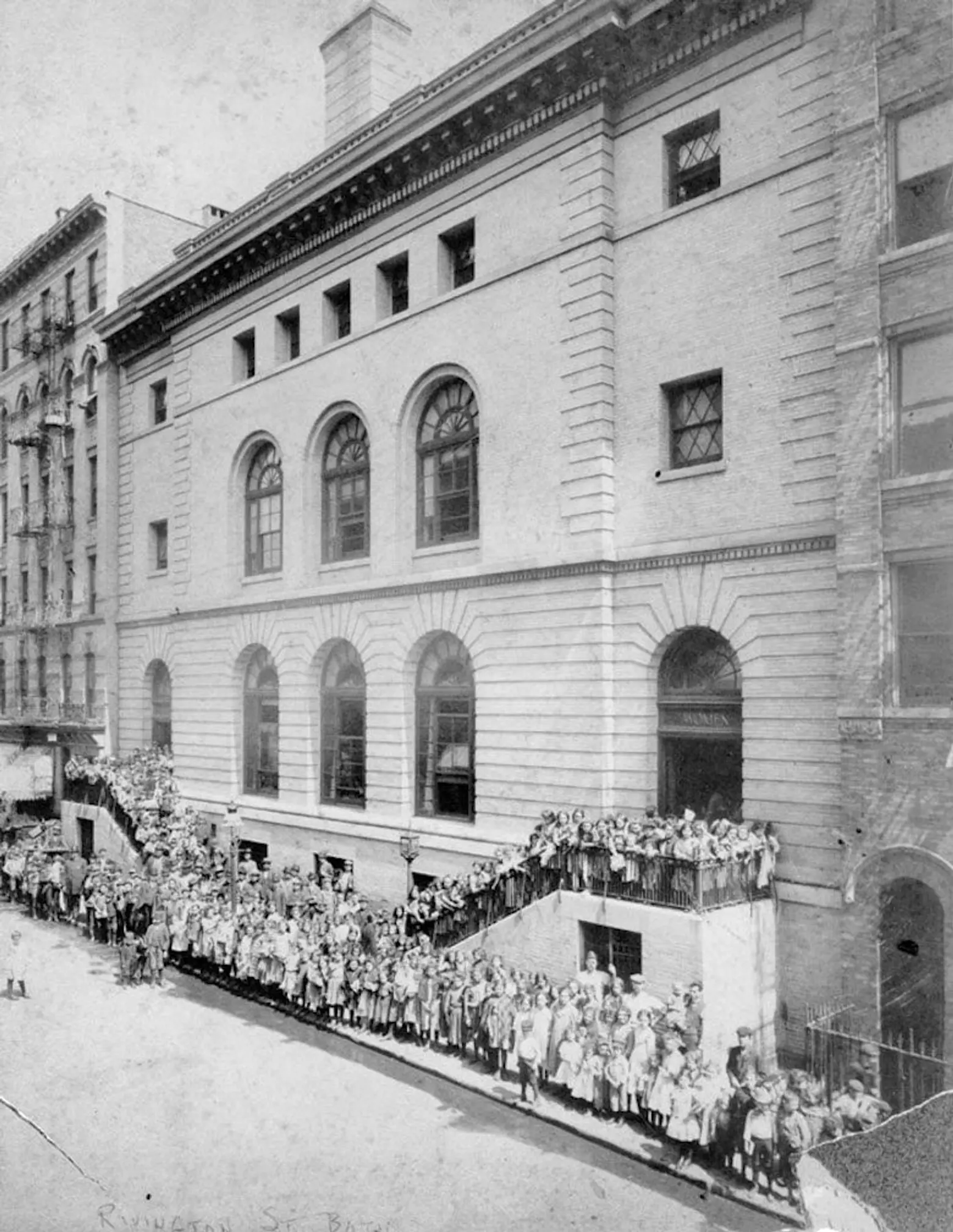
Baruch baths at 326 Rivington Street. Image: New York City Department of Parks and Recreation.
The city’s first municipal bath opened at 326 Rivington Street in 1901–it was later named the Baruch baths–and quickly became the place to be for the crowded neighborhood with lines outside reaching riot proportions during the hottest days. Some of the city’s former public baths are still splashing, though they’ve morphed into actual pools. The pools at Asser Levy, East 54th Street and Tony Dapolito and Gertrude Ederle recreation centers all started as bath houses.
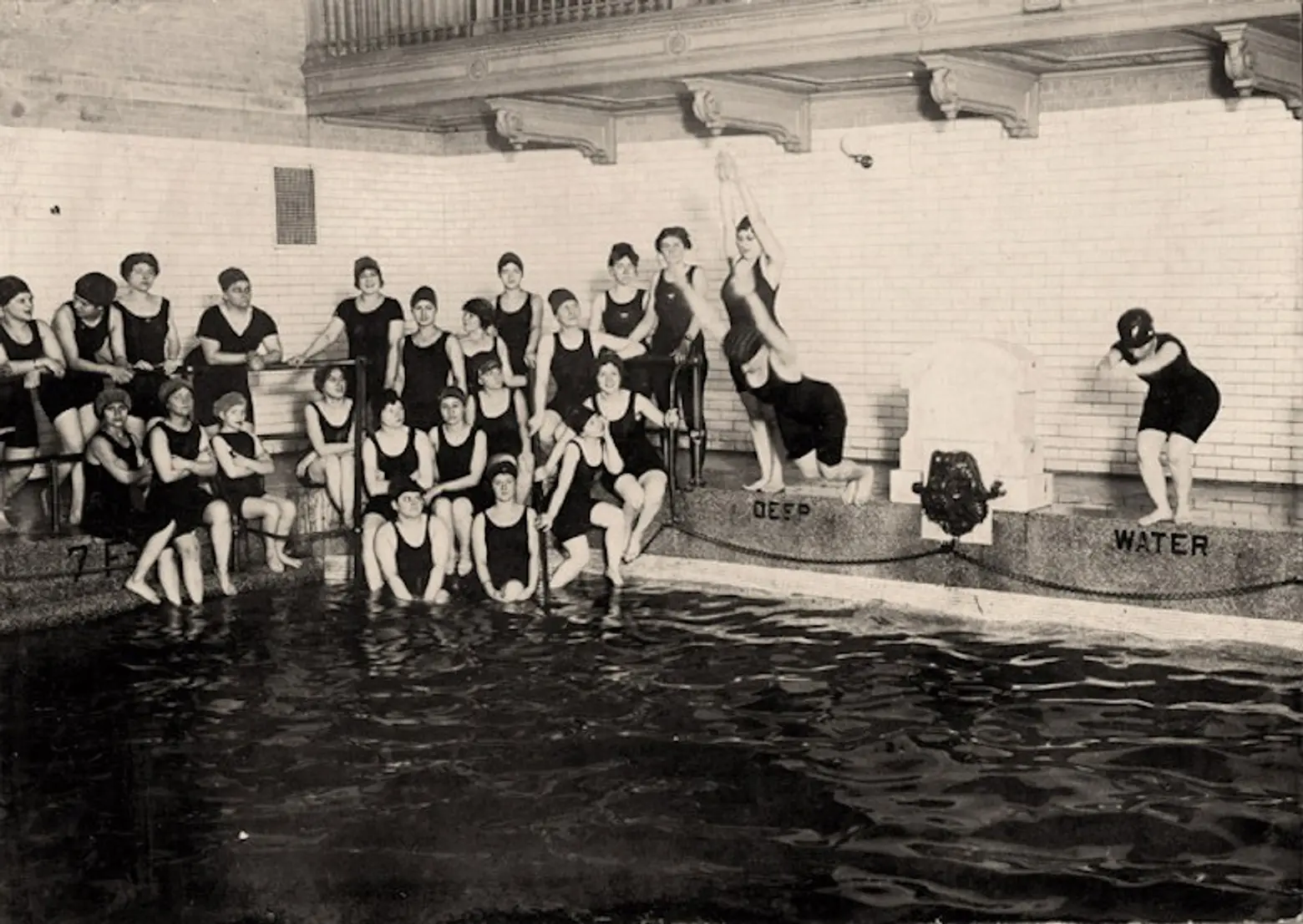
Public bath. Image: New York City Department of Parks and Recreation.
In their earliest incarnation, floating baths sat aboard pontoon boats on the Hudson or East Rivers starting in 1870; the city had 15 floating pools by 1890. At 95 feet long and 60 feet wide, each floating bath was divided into two parts, one for adults and one for children. There were 68 dressing rooms lining a small gangway around the edge of the pool. In 1911, 1,818,721 patrons used floating baths.
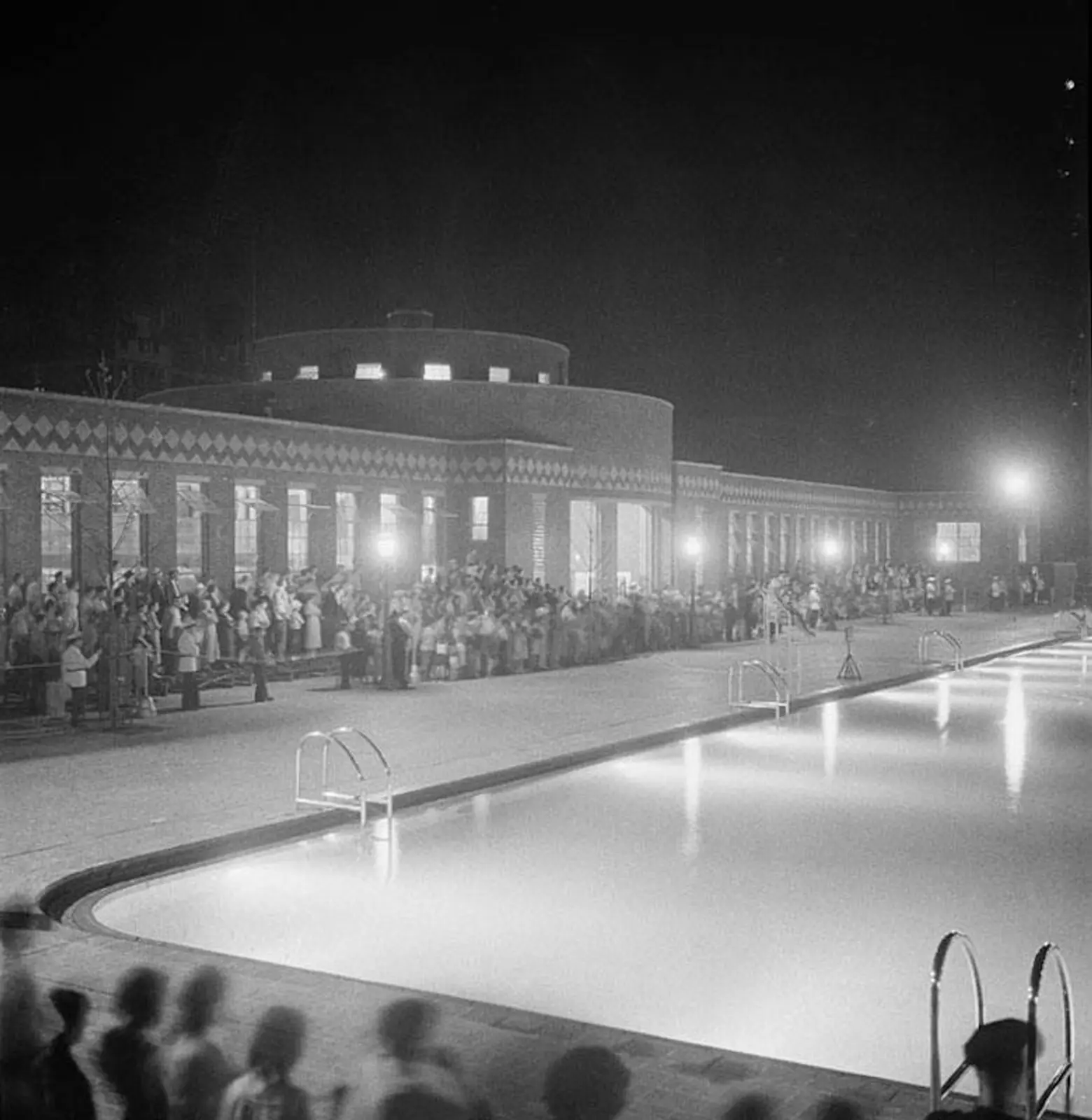
Dedication of a new public pool in Sunset Park. Image: New York City Department of Parks and Recreation.
Robert Moses, as usual, poured water on all the fun when a new–and admittedly more sanitary–generation of pools splashed onto the scene in the 1930s. Moses helped launch outdoor swimming facilities with feats of engineering like heating and filtration systems that quickly became standard in NYC neighborhoods.
In the the 1960s and ’70s, mini-pools described as “large metal tubs that were towed from place to place” were rolled into neighborhoods that lacked swimming facilities until more permanent pools were built. Though 18 of those original mini-pools still remain, they’re no longer mobile.
The history of the city’s floating public oases sails into the 21st century at one of its more unusual cooling-off spots. With help from the Neptune Foundation, urban activist Ann Buttenwieser launched one of NYC’s favorite floating pools in the Bronx at Barretto Point Park in Hunts Point after reading about the city’s 19th century floating baths. The barge-turned-pool contains 100,000 gallons of water and weighs in at 4,040,960 pounds when full, and attracts scores of neighborhood youngsters as well as swimmers from around the city via shuttle buses run by the pool. Keeping floating pools clean is another modern challenge that has been met with creativity by the team behind the +Pool project. The floating +Pools boast their own river-cleaning filtration system.
The city’s mini-pools close on Labor day and the rest of the free public pools are open through September 10 from 11 a.m. until 7 p.m. daily. You can out more about the history of the city’s outdoor pools here.
[Via NYT]
RELATED:
